It’s a sunny but frosty October morning as police cars pass up and down sections of the single-lane Värska-Ulitina road in southeastern Estonia. A sign warns motorists that the road passes through Russia and that vehicles and pedestrians may not stop. Then there is a fence with barbed wire and 30 metres or so of Russian tarmac hemmed in by pine, spruce and birch trees. If you take it slowly, the drive through Russia takes about nine seconds. Welcome to the Saatse boot, a parcel of Russian territory that juts into Estonia near the village of the same name.
On 10 October, Russian servicemen appeared inside the second Saatse boot, another Russian semi-enclave through which a road connecting several Estonian villages runs for about a kilometre. The Estonian authorities promptly closed the road. Novaya Europe went to the border area to see if locals were afraid of Russia’s belligerent behaviour.
Lutepää
The border village of Lutepää is a favourite for Estonians in the summer, but right now there are dozens of dachas but almost nobody about, most having left for Tallinn, Tartu and other parts of the country for the winter. However, we do manage to speak to Linda, a rather reserved pensioner who was nevertheless very happy to invite us into her home, which sits right next to a border fence that was built in 2024 to separate Estonia and Russia.
“There are cameras everywhere now so it’s best not to go too close. If the border guards see you, they’ll come and fine you,” Linda warns me.
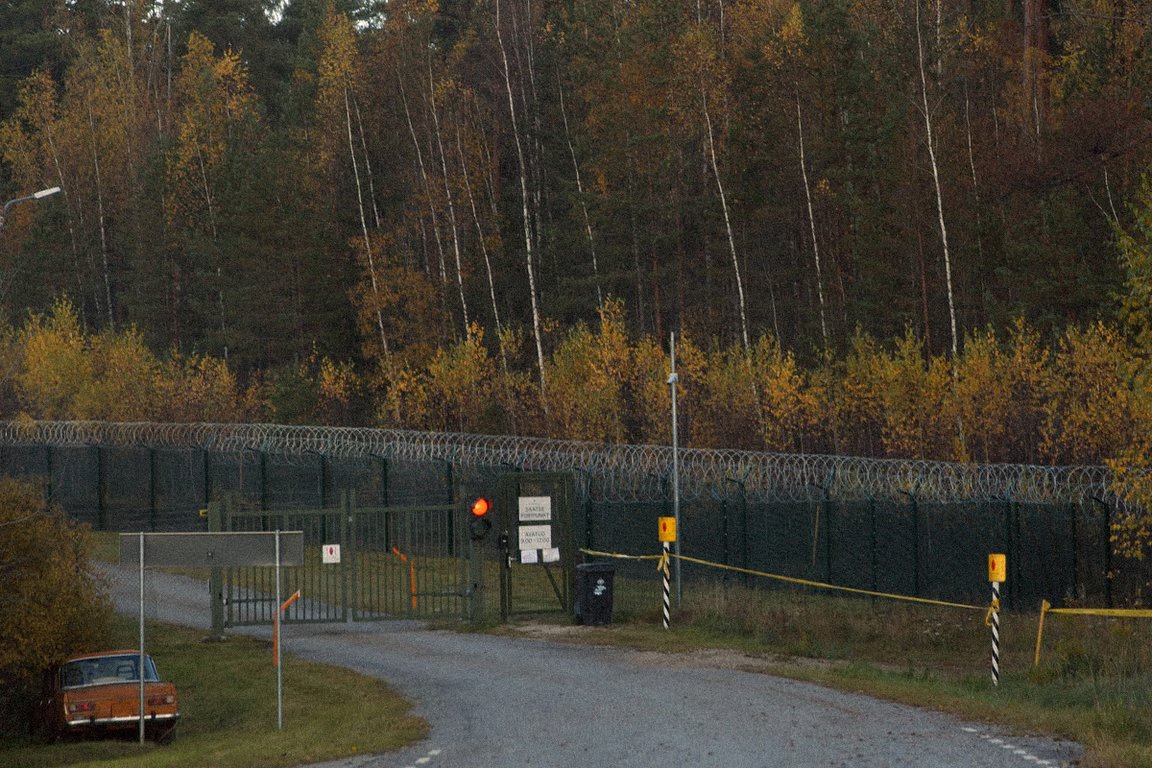
The Russian-Estonian border fence. Photo: Novaya Gazeta Europe
The precautions make more sense when you understand the local geography. To get to Lutepää, you need to drive along Route 178, which is interrupted at two points by Russian territory, the first 1-kilometre long, the second just 30 metres, the Saatse boot and the small Saatse boot respectively.
The road was shut indefinitely shortly after our visit, making any trip to get here far longer than it used to be until a planned new bypass is completed.
Linda is dressed in baggy pants, a slightly shabby jacket she wears for gardening and autumn boots. She says no one lives in the village year round, and that she herself is only here to tidy up ahead of winter.
“We were waiting for a normal road for decades, and now it’s been closed. It’s sad,” Linda tells us. “Now we’re waiting for a new bypass through the forest.”
Friends often used to ask Linda how she could live in such close proximity to Russia even before the “incident”, as the Estonian media call the appearance of a dozen Russian servicemen near the Saatse boot. “But I’m relaxed about it,” Linda says with a shrug. “No one bothered us.”
Lutepää is patrolled by Estonian border guards, which, Linda says, gives her a sense of security. When asked if she fears a Russian invasion, she answers with a smile. “Of course, there is a risk Russia will invade, but talking won’t help. We still have to live here.”
Disputed territories
The border between Estonia and Russia was demarcated in the 1990s, after the collapse of the Soviet Union. Initially, the two countries intended to swap land so that the borders were smoother and more convenient. But the 1920 Treaty of Tartu, which created the Estonian state, proved a stumbling block as it says the Pechory district of Russia’s Pskov region, across the border, belongs to Estonia. Russia viewed any mention of the Treaty of Tartu as future grounds for Estonia to make other territorial claims.
The Saatse boot became a cause for concern for the Estonian authorities for the first time in years when, on 10 October, the Estonian Police and Border Guard Board (PPA) reported that a group of at least 10 armed men in unmarked military uniforms had appeared on the road.

An Estonian border village. Photo: Novaya Gazeta Europe
The Estonians saw it as a provocation and closed the road to civilian transport that same day. The PPA spokesman said there was “increased activity on the Russian side” and that the safety of residents of the border villages was their priority.
A few days later, on 16 October, the Estonian government decided to prioritise a new bypass, work on which is due for completion by the spring.
Värska
To the north of Lutepää is Värska, the local administrative centre, a popular spa resort that attracts people from all over the Baltic states. However, the holidaymakers we attempted to speak with seemed reluctant to answer questions, and told us that they had no interest in politics.
Värska is a busy place compared to Lutepää, and attracts residents of nearby villages who come here to shop and to access government services and healthcare. The local cultural centre hosts amateur concerts, mainly for retirees, and minibuses regularly run between the supermarket and other villages in the parish.
She adds that her family lives in this parish, but that if something happens, they’ll all “move as far away as possible”.
Now there is just one 18-year-old waiting for her mother to finish shopping. “No one’s worried about Russian soldiers. The only worrying time was when they came so close,” she says, stammering a little. Her middle-aged mother appears, carrying two small bags. She is much more concerned than her daughter about Russian soldiers in the border area.
“I support closing the boot,” she tells me. “I’d been thinking for a long time there should come a point when we do something. No Estonian will pass through it now. It’s dangerous. You never know what the other side will decide.”
She adds that her family lives in this parish, but that if something happens, they’ll all “move as far away as possible”.
They get on the bus and leave, their journey home unaffected by the closure of the boot. The driver of another bus who overheard our conversation smiles. “I’ve been driving this bus for six months and nothing has happened. I wasn’t afraid before either. I ferry people from one place to another. Why should I worry?”
There aren’t many people on the streets of Värska so we knock on doors. Often only guard dogs bark back at us. At one house, a woman of over 50 in rubber boots and garden gloves opens up after a couple of minutes.
“What can I help you with?” she asks. Then says: “I’ll get my husband. He speaks Russian.” Her husband is a smiling pensioner with his beanie down over one ear. He speaks fluent Russian, a rarity in this area, and plays down the threat from across the border, as well as the seriousness of the recent incident.
The Russians have enough problems of their own and aren’t interested in Estonia, he argues. “People are starving, they have no money, and yet they’ll mount an attack? It makes no sense. If they were strong, like NATO, then OK … But everything’s bad there. They haven’t got anything to eat. Will a hungry man attack? It’s laughable.”
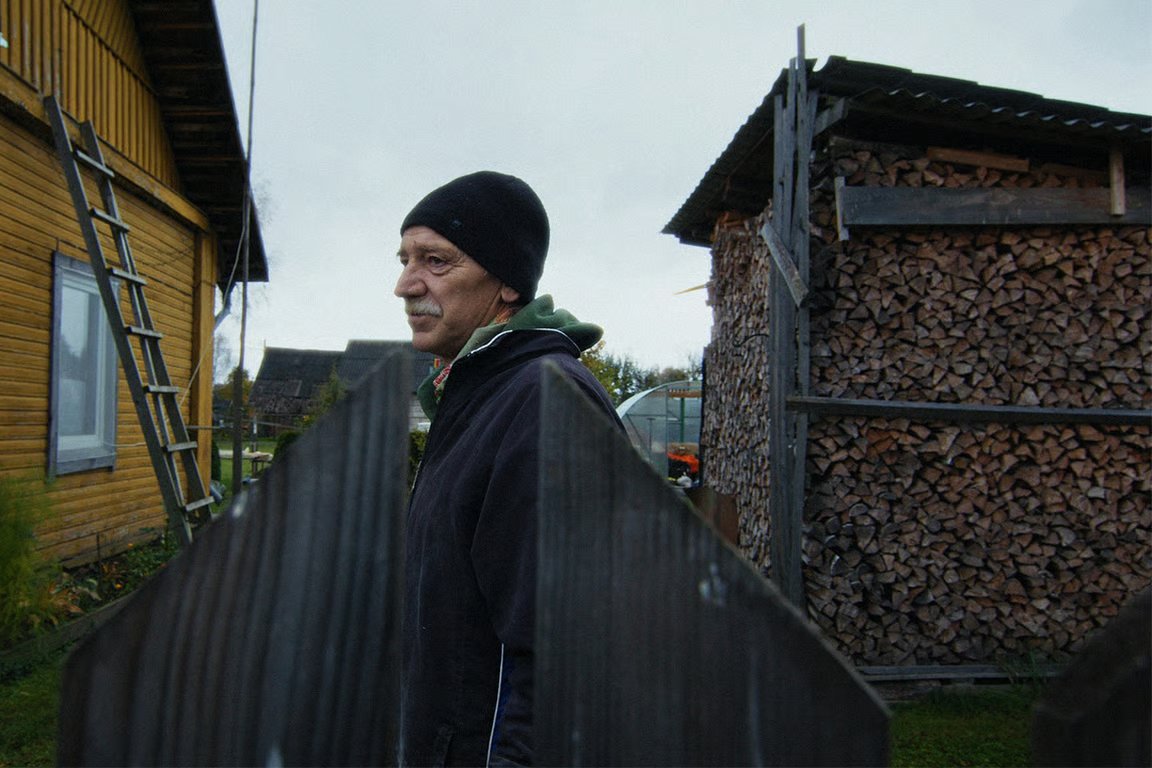
A villager in Värska, Estonia. Photo: Novaya Gazeta Europe
Next we meet a pensioner with a stick on his way home from a walk. Having heard us speak, he switches to Russian and says in a strong accent: “Let them attack. There’s nothing for them here,” with a laugh before going on his way.
Taarka Tarõ Köögikõnõ is a restaurant in the village of Obinitsa that serves the cuisine of the Seto people, an indigenous Finnic people and linguistic minority that have historically lived in the borderlands between modern day Estonia and Russia.
The restaurant’s owner, Rieka Hõrn, tells me that the Saatse boot is historically Seto land, adding that “two thirds of our land was taken from us.” Her view of the Russian soldiers’ recent appearance there is ambivalent. “The servicemen were on their own territory and didn’t violate any laws.”
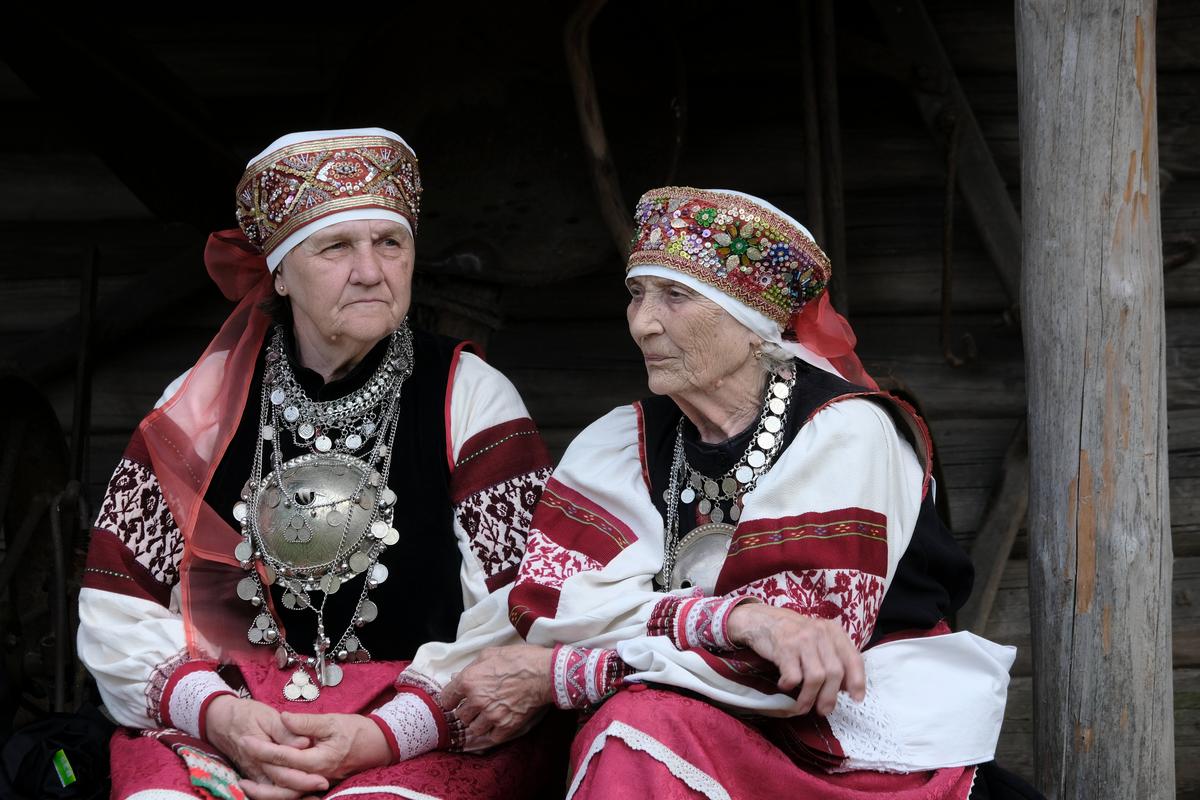
Women wear Seto traditional dresses as they attend the Seto Dance Festival in Värska, Estonia, 29 June 2024. Photo: EPA / Valda Kalnina
The Seto are a small minority numbering about 13,000 living in southeast Estonia. After Estonia was absorbed by the USSR in 1945, the Soviet authorities transferred most of the Seto to the nearby Pskov region of Russia. However, some Seto moved to Estonia, where they were increasingly assimilated, whereas those who stayed in the Pskov region were forcibly russified. However, despite the new boundaries between them, Setos remained in touch right up until the collapse of the USSR.
The Seto continue to hold territorial claims against Russia, having lost their capital, Petseri, now renamed Pechory, and over half their land to the country. Some Seto have family homes and the graves of family members in the Pskov region, and while it used to be possible for them to visit before the war in Ukraine began, since then, the borders have been closed, Russian visas became far harder to obtain and preferential treatment for people from the border region was abandoned. Some 100 or so Seto still live in Russia, and those on the Estonian side consider losing contact with them as a tragedy.
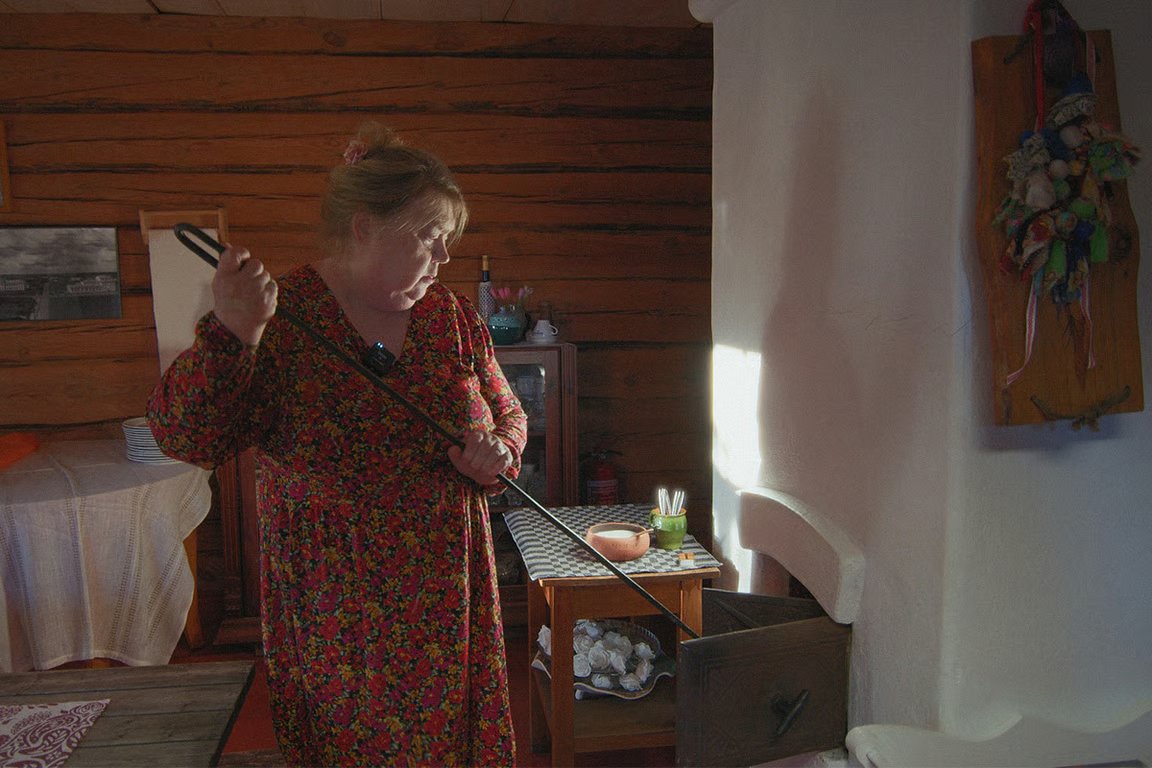
Rieka Hõrn at her restaurant in Obinitsa, Estonia. Photo: Novaya Gazeta Europe
Saabolda
In the village of Saabolda, south of the Saatse boot, people are more talkative. Viktor and Marek, both in their forties, are on their way to the mobile grocery van. One is in waders, the other in a waterproof jacket and trousers, both wear rubber boots. They eye us a little suspiciously, but smile when we approach.
The boot’s closure has changed nothing for them. “Life got a kilometre longer,” Viktor says. “Actually, it’s got safer, as there are patrols everywhere.”
“What does Russia want with us?” Marek chips in. “If they need Estonia, they’ll attack Tallinn. We’re small. We’re not of interest. But if they want to, they’ll go wherever.”
Viktor shakes his head thoughtfully. “Where can we go if nowhere’s safe? I can’t buy a house in Spain like some rich person! We’ve got to believe in the army.”
“I don’t think our army will protect us,” Marek interjects. They’d try, but whether it would come to anything is another matter.”
A man in shabby dark clothes sits at the bus stop on the way out of Saabolda. He complains about Estonian politicians, the road and the bus.
The two friends do agree on one thing, though — the media is largely responsible for stirring up fear and panic. “The media constantly writes about a possible war,” Viktor says with a laugh. “If they stopped, people wouldn’t be scared. The less news you read, the better.”
A man in shabby dark clothes sits at the bus stop on the way out of Saabolda. He complains about Estonian politicians, the road and the bus.
“What use are these idiot politicians? The fucking morons closed the road. Life is worse now. There’s no bus because of the boot. They can sail there in a submarine for all I care. It’s their territory,” he says of the Russian servicemen.
Like Marek and Viktor, he too is in a hurry to get to the “shop on wheels”, which serves the larger villages in the parish every Friday. If he misses it, he’ll have to wait another week as there are no other shops in Saabolda.
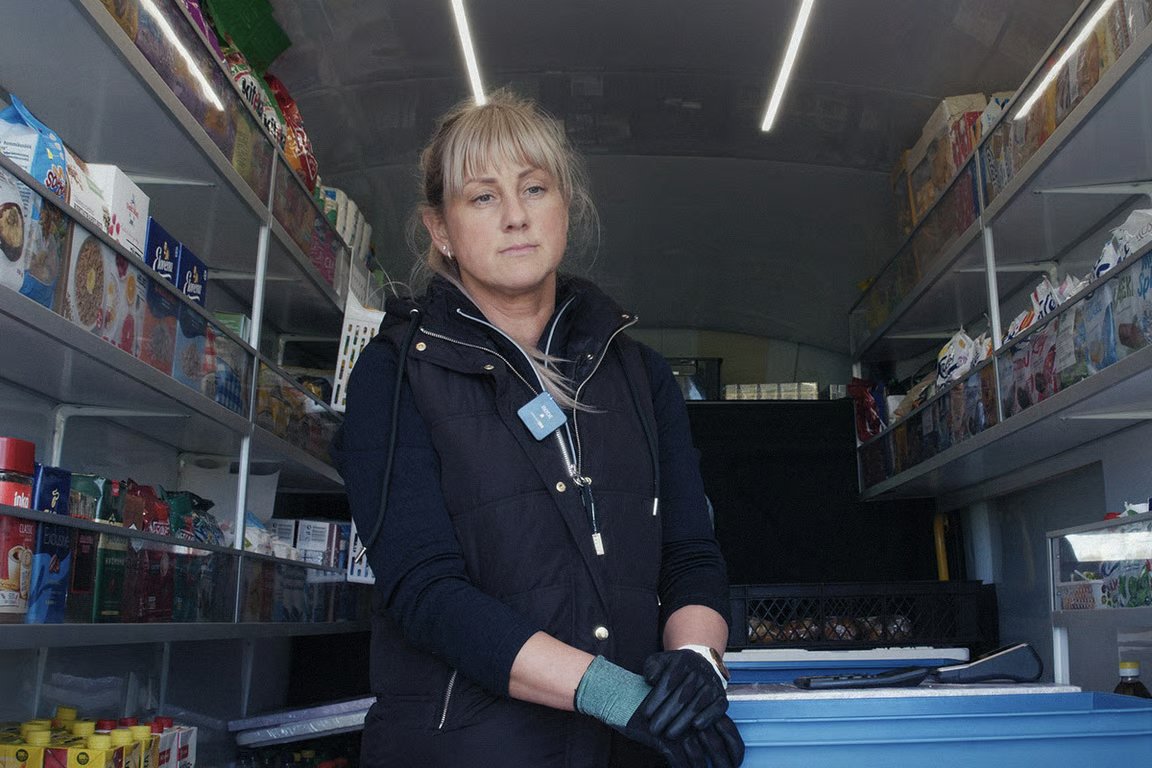
The driver of the mobile supermarket serves customers in the village of Saabolda, Estonia. Photo: Novaya Gazeta Europe
The van’s driver is a friendly blonde woman in her thirties who’s been doing the job for a little over a year. The shop on wheels has shelves of cookies, juices, alcoholic drinks and sodas, as well as two refrigerators with fresh fish. It also sells bread and dairy products. She wears gloves as she puts small fish in a bag for a pensioner in a grey jacket. The woman asks her to weigh out some cookies and sweets too. Next comes a man of about 40. He is unshaven and wrinkled and his red hands tremble slightly. He takes his vodka and leaves.
The saleswoman says the job has got harder. “People miss us and end up with no food,” she says sadly. “We were half an hour late today, but, thank God, people waited.”
She says the appearance of the Russian military in the boot didn’t bother her. “Nothing terrible happened. My friends think they were just doing their job. … I’m not particularly scared they’ll attack.”
Join us in rebuilding Novaya Gazeta Europe
The Russian government has banned independent media. We were forced to leave our country in order to keep doing our job, telling our readers about what is going on Russia, Ukraine and Europe.
We will continue fighting against warfare and dictatorship. We believe that freedom of speech is the most efficient antidote against tyranny. Support us financially to help us fight for peace and freedom.
By clicking the Support button, you agree to the processing of your personal data.
To cancel a regular donation, please write to [email protected]

